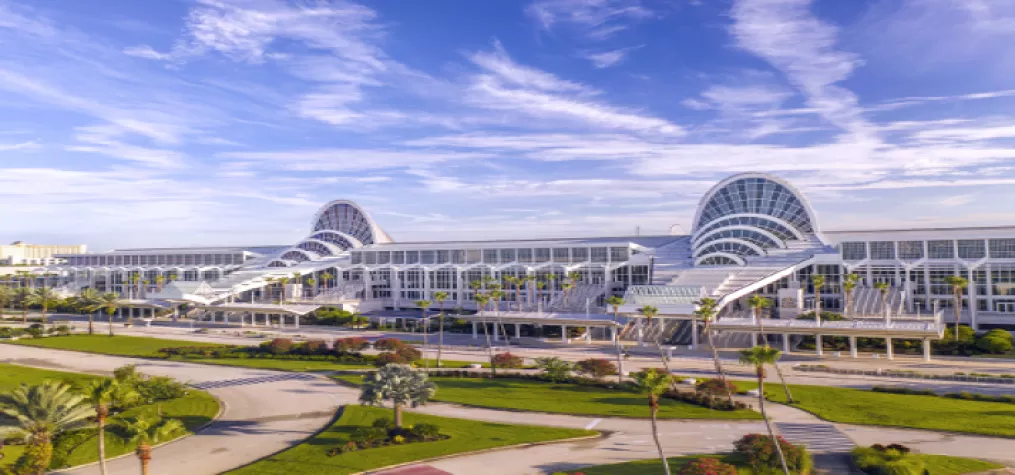Content Is Key: How to Plan and Curate Content for Your Hybrid Event
Prior to the COVID-19 pandemic, most individuals and businesses couldn’t imagine hosting an event with in-person and remote attendees. According to a recent survey by the Global Business Travel Association, however, three out of five respondents expected to host at least one hybrid meeting in 2021. This major shift underscores the importance of a solid content strategy for hybrid events.
Everyone is craving more information in a world of quick hits and short bits of knowledge, so your event content needs to stay on message and to the point. At the start of the pandemic, event hosts tried to make virtual events feel like video games to capture the attention of distracted remote audiences. Now, the biggest mistake you can make with content and presentations is designing an event that makes people feel “talked at” for hours on end.
Instead, think of your event and its content more like a web page that people can interact and feel engaged with. As you plan your event, prioritize creating engaging, impactful content. Event content creation involves so many elements, so help yourself out by starting your planning as early as possible. Most event planning conversations take place 60–90 days ahead of the scheduled event, and your hybrid event might require an even longer planning and brainstorming period to make the on-site and virtual components feel seamlessly integrated.
The ‘Big 3’ of Your Hybrid Event Content Strategy
Putting together a content strategy to fill your hybrid event all comes down to figuring out who your ideal target audience is, what information would best serve and educate them, and how to deliver that content in an engaging, memorable way. The most important steps you can take to develop better content and delivery are outlined here:
1. Identify your audience.
How your message is received and if it is memorable depend on your knowing your audience members and accurately matching your presentation to their interests. Ask who will be in the room and who will be virtual. Consider the timing of the event and your audience’s time zones. Make a conscious effort to be relatable and to carefully consider who they are and what they want from you in terms of content and education. Ask yourself how you can be useful to their needs or whether what you have will help them meet or improve their specific objectives.
Figure out how you want the experience to feel and how you want your audience to participate, and tailor the technology and event to those needs. Will your remote participants simply be viewing a video, or will they be active alongside your in-person participants? Do you want them to use Zoom or stream the event via a different virtual platform? You can also ask the on-site participants to use apps on their mobile devices. The most common method, however, is for participants to use a web page optimized for mobile that they can log into. With this approach, you will need to create that web page while keeping in mind a good user experience for your target audience.
2. Define your message.
Instead of trying to cover a multitude of topics, focus on one topic to really resonate with your audience. Jumping around in your presentation will confuse attendees, and you will lose their attention. If you do decide to touch on various topics, incorporate smooth transitions and let the audience know that you are shifting to a new topic within the presentation. Great event organizers nail down what the presentation will look like, what PowerPoint templates to use, and how many words should be on each slide. They also host practice sessions with speakers to make sure they’re not violating presentation rules and that the message comes across clearly.
Defining your message also extends to your visuals: Be sure to keep the theme and design visually consistent across the in-person and virtual experiences. The logos, typography, color scheme, graphic elements and so forth should all be cohesive and contribute to sending your defined message. Part of your planning should include outlining how to convey a strong identity for your event that’s consistent with your branding and then documenting those visual guidelines for everyone who’s organizing the event and creating its content.
3. Build and scope your event.
Hybrid events can include a variety of media, so identify the scope of your event and what it will include. Video is a crucial media component to consider, with your choice of either live or prerecorded video depending on your capabilities and the message you want to get across. Live video requires physical equipment (screens, audio systems, lighting, etc.) and the labor to support it. Pre-recorded videos are planned and shot well in advance and often incorporate a variety of corporate marketing and brand assets, customer and employee interviews, and more.
Remember, your virtual audience members are likely distracted by things happening at their physical locations, which might detract from their event experiences. Keep engagement heightened by including an interactive component or several, such as breakout sessions with questions that encourage remote and in-person audiences to participate together. Polls, quizzes and chats can jump-start important conversations while also helping audiences get more out of the presentation.
If the pandemic has taught us anything, it’s that attention spans are shrinking, especially in virtual meetings. A defined content strategy pinpointing the substance, look, feel and overall experience of a hybrid event can increase engagement and make the experience one to remember—so long as you stay focused, on-brand and engaging.
Don’t miss any event-related news: Sign up for our weekly e-newsletter HERE and engage with us on Twitter, Facebook, LinkedIn and Instagram!



Add new comment